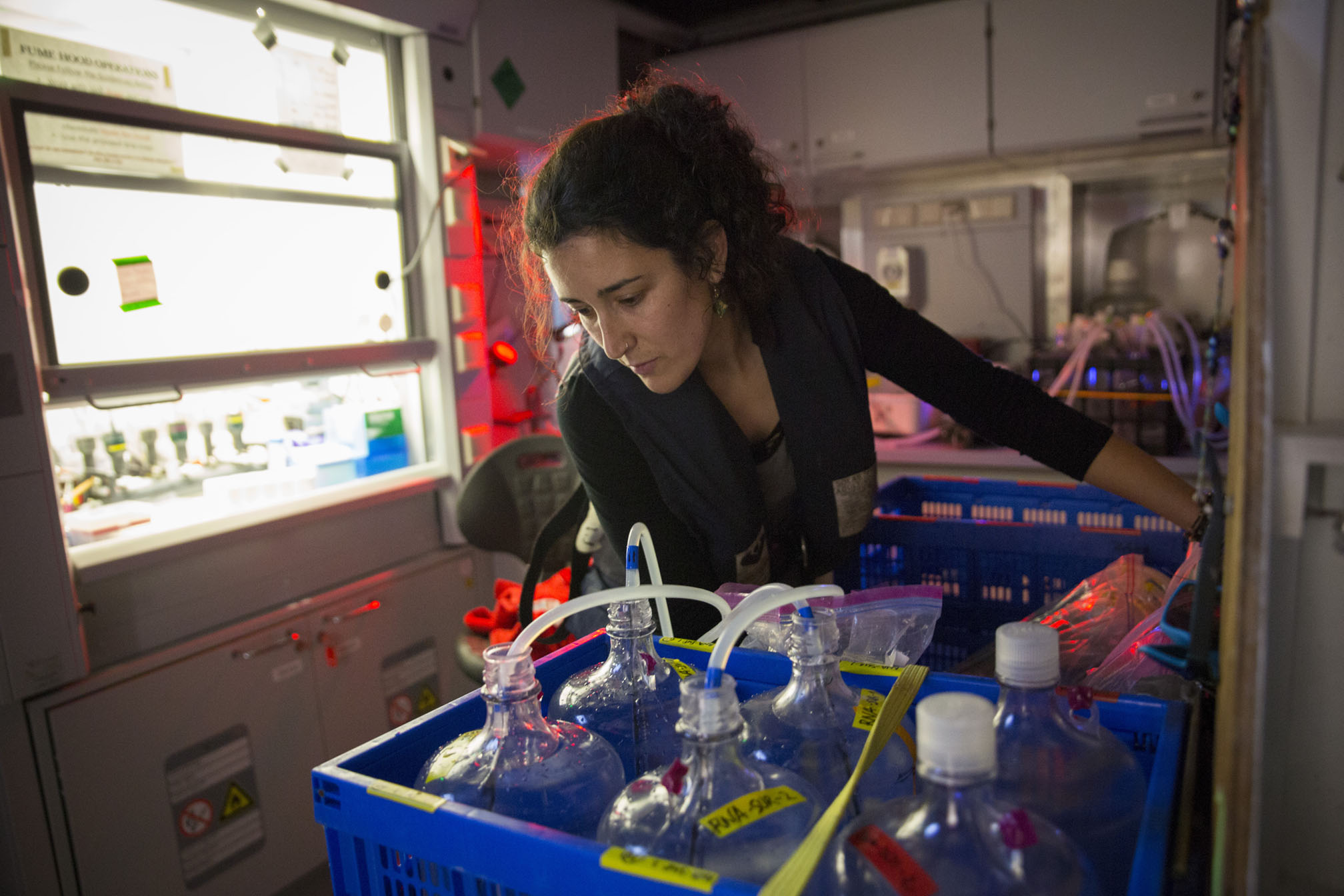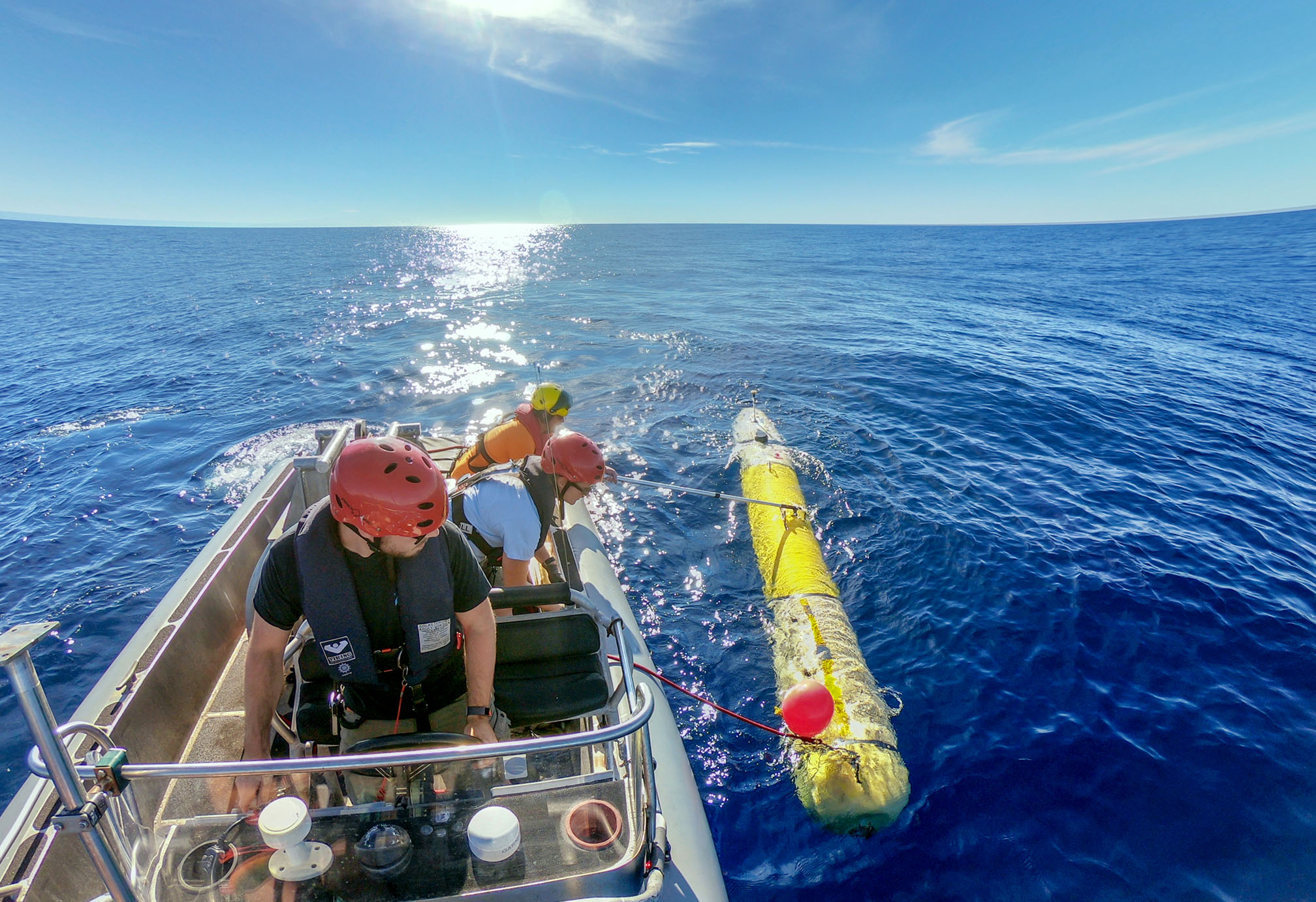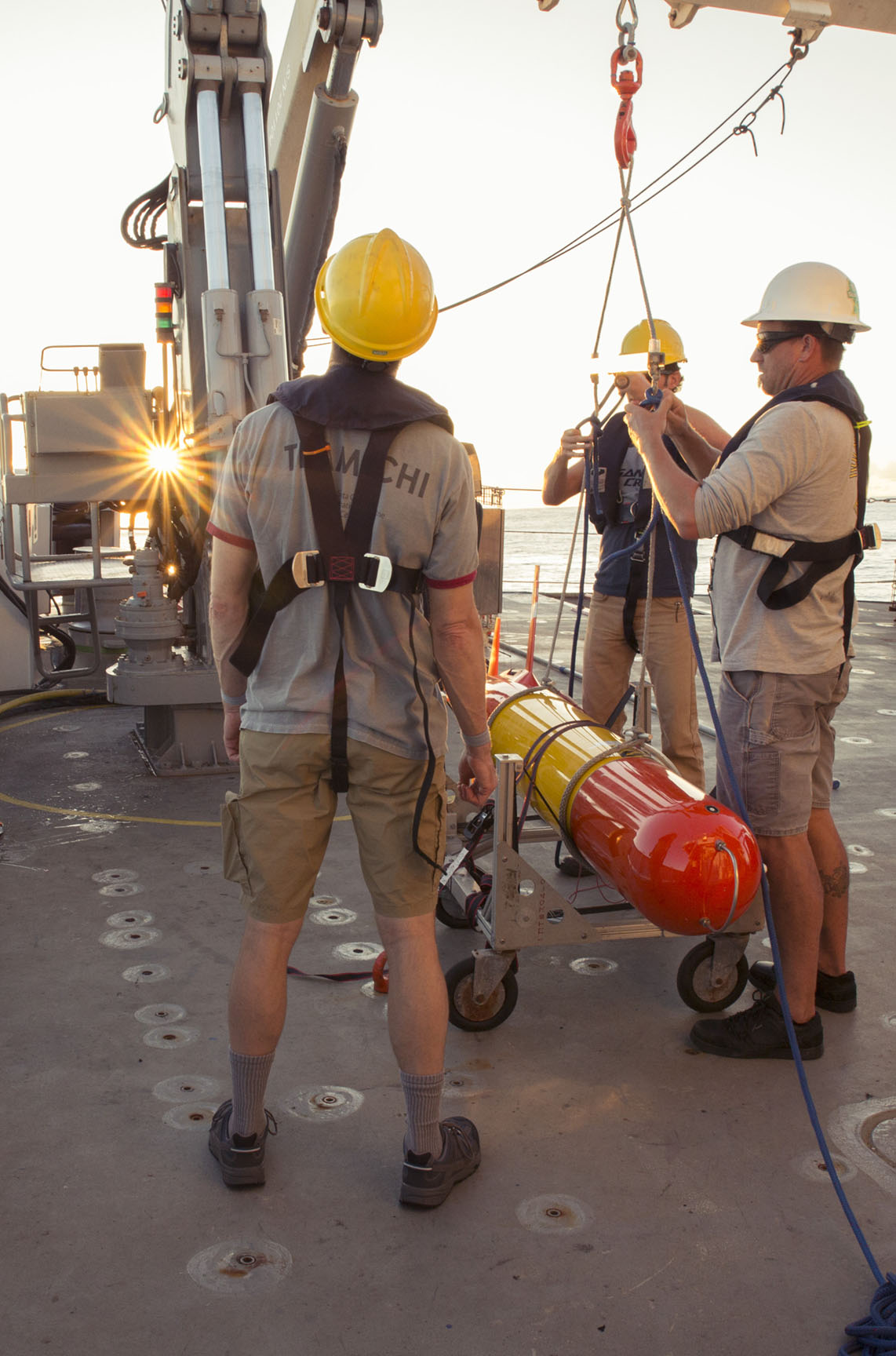The ocean gives life. It is no surprise that the abundance of liquid water is the principal habitability criterion in astrobiology. From the earliest emergence of life on Earth, the ocean has played a crucial part in sustaining it. For millennia, the seas have produced most of the oxygen we breathe, regulated our weather, and supplied critical nutrients and resources – despite the global disturbances from human activity in the recent decades.
Rapid ocean warming, acidification, deoxygenation, pollution, and overexploitation push marine life to the edge of survival. More than a quarter of all known oceanic species are losing a place to call home. Global scale and furious rate of change call for dramatic acceleration in our ability to understand, foresee, and avert their harmful effects. The developments in robotics, artificial intelligence (AI), and other technology frontiers can offer effective tools to accelerate ocean research, conservation, and management at scale.
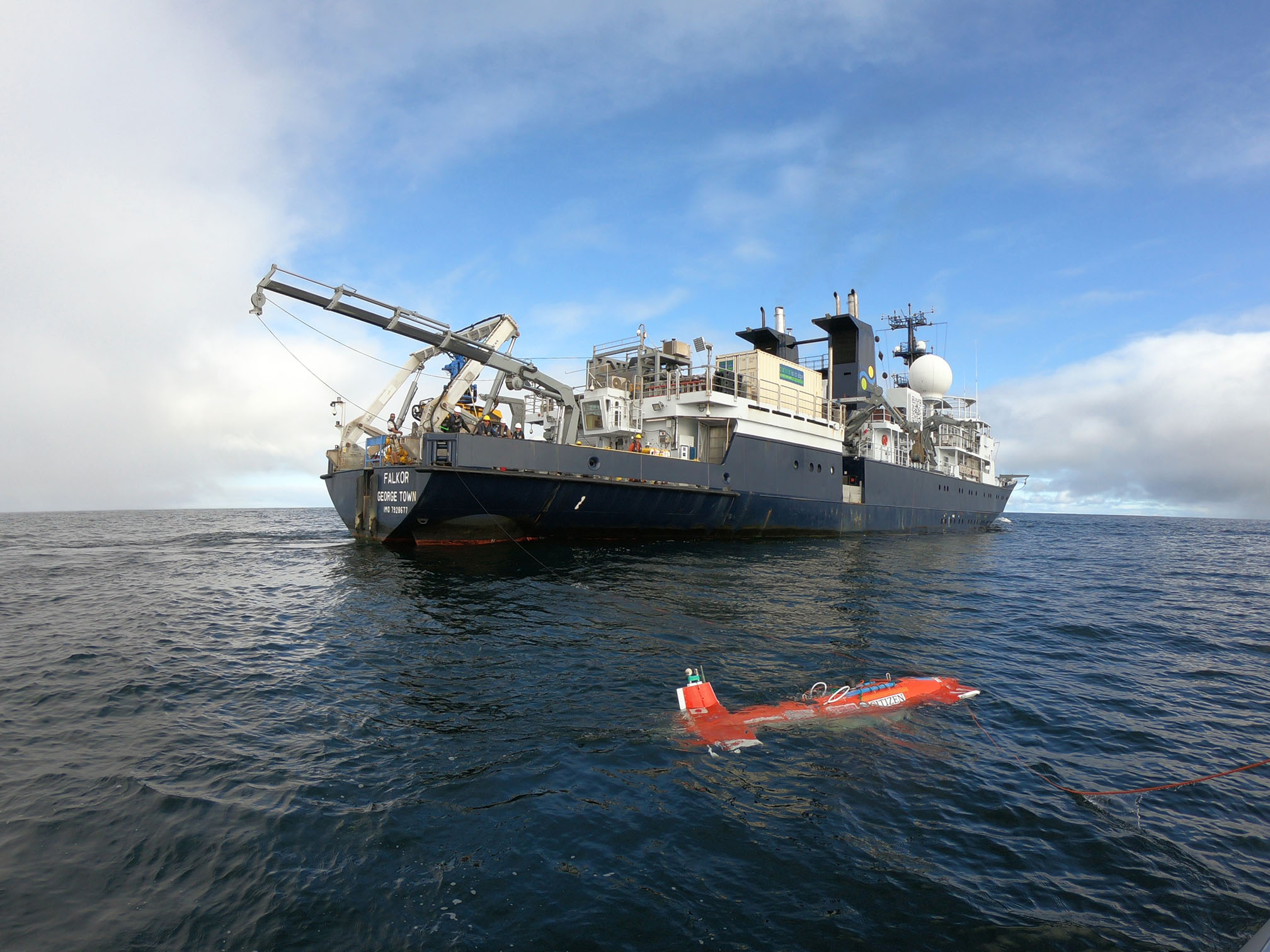
Established nearly a decade ago to advance ocean research with innovation, Schmidt Ocean Institute completed its busiest and most productive year in 2018. Research vessel Falkor spent 243 days at sea supporting 11 select research projects, including 135 days with remotely operated vehicle SuBastian onboard. These are all records for SOI. However, what hides behind these numbers is the true impact of the program. In this report, we discuss a series of transformative innovations demonstrated by SOI in 2018 to illustrate how we can scale our capacity to understand and better conserve our ocean.
One example of this transformation took place in February when two Saildrones, unmanned surface wind and solar powered vehicles, were launched to the White Shark Café to study why this remote area attracts white sharks. Traversing thousands of miles halfway between Hawaii and California, Saildrones surveyed the region for a month ahead of Falkor’s arrival. Their early entrance informed the scientific sampling plans, gathering rich sensor data that showed how small-scale eddies draw nutrients closer to the surface to enhance biological production; a good reason why the sharks may be drawn to this area. Following the expedition, the Saildrones duties were extended to track an oceanic front for SOI’s next project a couple thousand miles away. These examples show how the Saildrones can be applied to future seagoing oceanography, where operational flexibility, endurance, low environmental impact, and excellent observational data can reduce operational costs and risks. This shift will make critical elements of marine field science accessible to oceanographic researchers around the world.
At SOI, we are gearing up for the future, and the new ways oceanography will be done. We are always excited and curious to see what scientists who conduct research on board Falkor will come up with, and how, together, we can push the existing boundaries of marine research. – Wendy Schmidt
Several projects this year focused on developing AI and machine learning tools to support marine science and management in near real time. In January, teams from Massachusetts Institute of Technology (MIT) and University of Sydney tested artificial intelligence (AI)-based multi-vehicle ocean survey software from aboard Falkor using SOI’s high performance computer. The model was analyzed to inform real time planning of operations to collect valuable data as the survey progressed. SOI, in collaboration with the University of Porto, also developed Ocean Space Center software that was used in May to automatically guide dozens of aerial, surface, and submarine robots as they mapped the dynamic subtropical pacific ocean front in high resolution and 3D. The advanced software managed successful multi- robotic ocean surveys while requiring only one human observer in Falkor’s science control room.
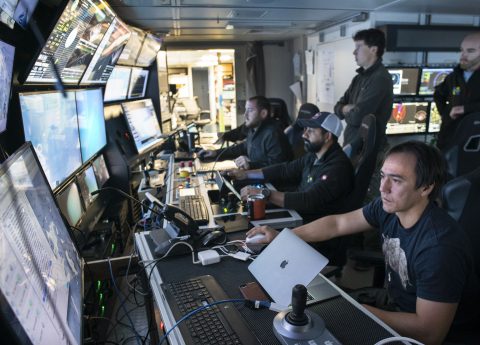
In July, teams from the Universities of Southampton and Tokyo, compiled the largest known centimeter-resolution color 3D map of deep seafloor from 1.3 million photos acquired on site at Hydrate Ridge off the coast of Oregon. They used unsupervised machine learning at sea to quickly find the areas of scientific interest and study rapidly changing seafloor that would otherwise be virtually impossible to find and sample within the cruise timeframe.
During the final expedition of the year, Falkor hosted a team of roboticists developing advanced AI for autonomous planetary exploration in deep space that will tolerate large communications latencies. The researchers tested non-deterministic ocean surveying, where robots could “locate gas seeps”, “find rock formations”, and “survey biological hotspots” without being explicitly programmed to do so and by having to learn the specifics of such tasks from diverse ocean data and expert annotations. In a successful demo, 11,000 square miles of ocean were intelligently surveyed within nine days. Highlighted by these projects, AI and machine learning are on the path to become indispensable for the future of oceanography.
With these unique journeys of discovery and development, SOI continues to bring the ocean to people in their communities, schools, workplaces, and recreation groups. With these unique journeys of discovery and development, SOI continues to bring the ocean to people in their communities, schools, workplaces, and recreation groups. High-resolution imagery from ROV SuBastian has been viewed in real time on our YouTube channel by more than half a million people and featured in 15 documentaries this year. New collaborations with the Smithsonian Museum and Aquarium of the Pacific have allowed us to connect scientists with greater numbers of people on shore. And SOI helps to make Falkor-related scientific articles open access so anyone can read the details from research done at sea
2018 was a remarkably productive year for science, and for sharing the joy and excitement of our discoveries and achievements. This is just one of the reasons SOI was named by Marine Technology Reporter as one of the Top 10 Ocean Influencers.
This year our report is organized by themes that are building a foundation of success for the future. Readers will find details on how we are contributing to the arts, advancing ROV SuBastian’s capabilities, sharing our incredible footage, and connecting with the public. We hope you will be inspired as much as we have been by our supported projects and research teams, technical innovations, and wondrous marine discoveries that have marked 2018.
